There's a lot of confusion surrounding the law for bike lights: is a flashing light legal or does it have to be steady? And do you have to fit reflectors, too? Here, we set the facts straight.
It's worth explaining why you need to fit and use lights when cycling at night. It's not just to see where you're going – if you're riding on city streets, the street lights probably do that for you fairly well. Equally important is that bike lights and reflectors help us to be seen by other road users and pedestrians.
If you're looking for advice on which bike lights to buy, check out our guides to the best bike lights for road cycling and best mountain bike lights.
The current UK law on bike lights
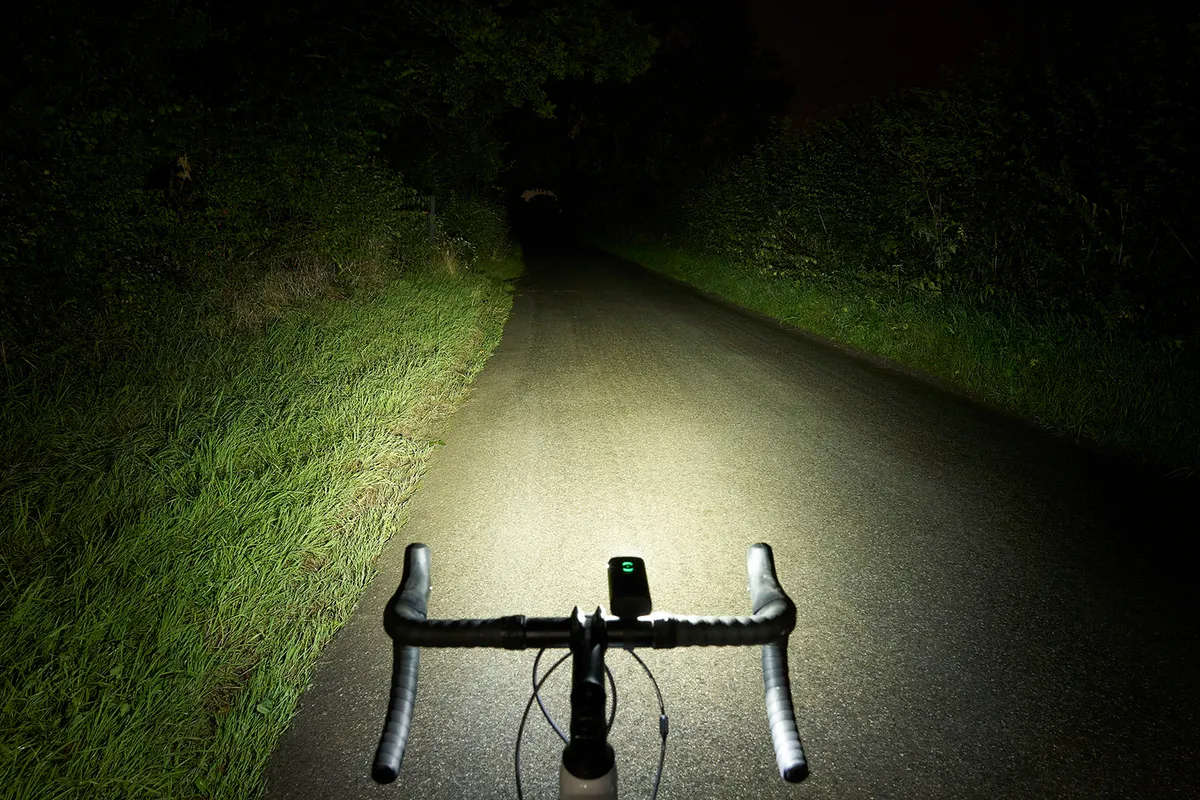
According to the UK's Road Vehicles Lighting Regulations (RVLR), it's illegal to cycle on a public road between sunset and sunrise without lights.
There have been quite a few changes to this legislation in recent years – the current version of the RVLR was published in 1989, and has since been amended multiple times, most recently in 2017.
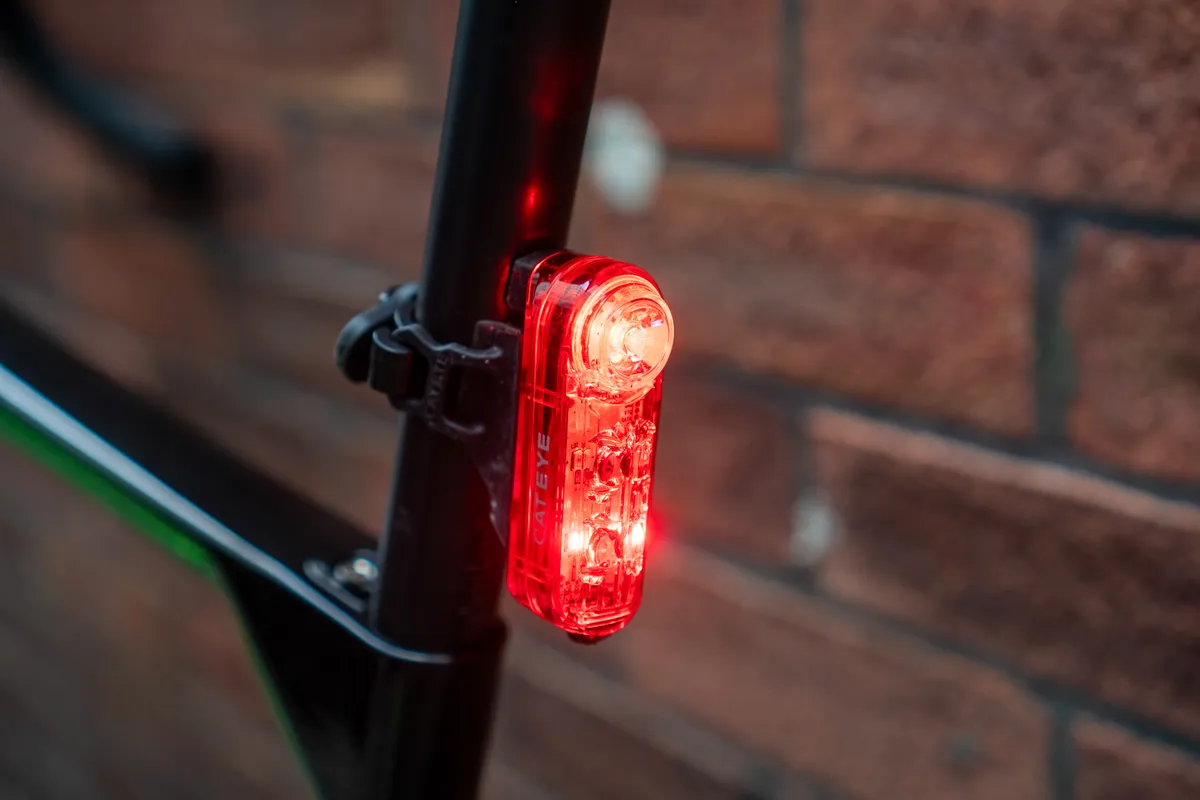
To avoid trouble with the law (and, arguably more importantly, to stay safe), a white light must be showing from the front of your bike and a red light from the rear.
The RVLR specifies minimum outputs for these lights and also requires that complete bikes must be sold with reflectors on the front and rear of the bike, as well as both the front and rear of each pedal.
To be totally clear, it is not a requirement to ride with a white front reflector fitted to your bike but it must have a red rear reflector fitted. Complete bikes must be sold with them fitted. In any case, it's a good idea to leave both of them on.
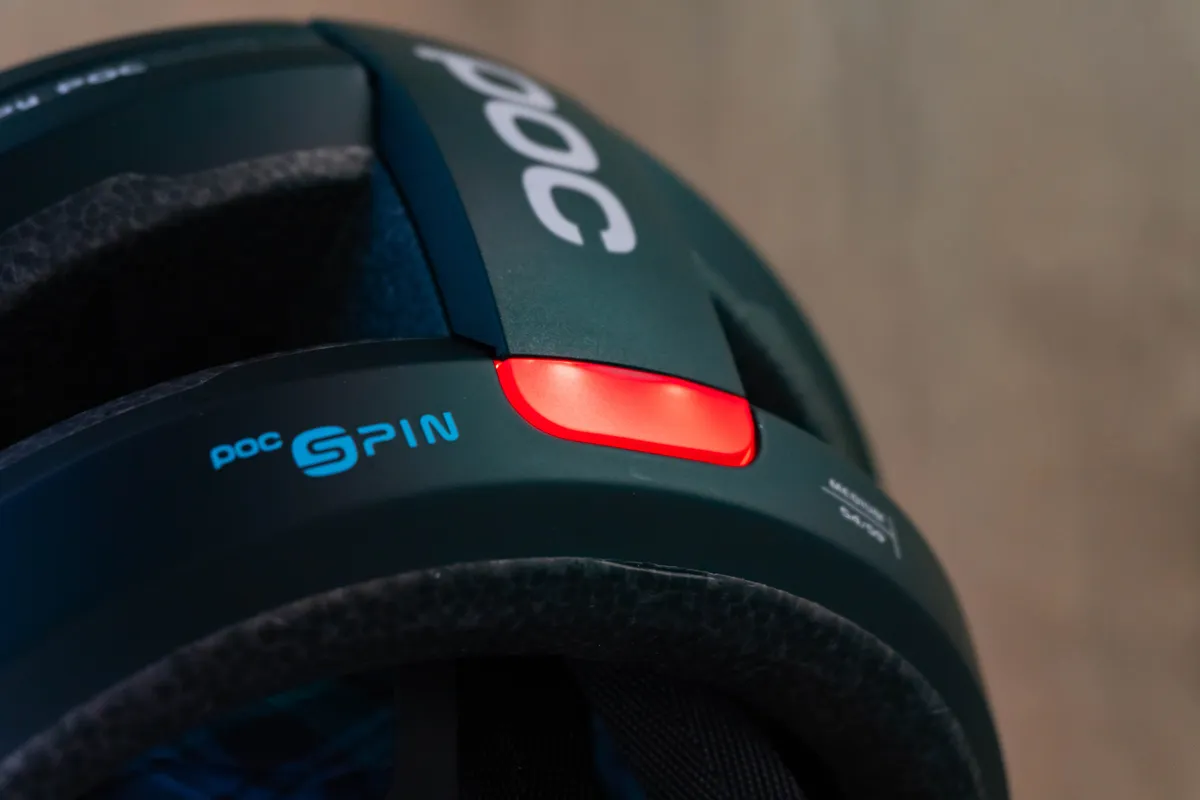
Note that, to stay on the right side of the law, the lights must also be fitted to your bike and not your helmet. The law states explicitly they should be mounted to your bike and they cannot be higher than 1,500mm from the ground in any case.
If you lack any of these things and are involved in a nighttime crash, then it could be regarded as 'contributory negligence', which is a fancy way of saying the law could potentially deem the incident partially your fault.
But, in practice, you’re unlikely to be pulled over by the police as long as the front and rear of your bike is illuminated.
This is backed up by Rule 60 of the Highway Code, which says:
"At night your cycle MUST have white front and red rear lights lit. It MUST also be fitted with a red rear reflector (and amber pedal reflectors, if manufactured after 1/10/85). White front reflectors and spoke reflectors will also help you to be seen. Flashing lights are permitted but it is recommended that cyclists who are riding in areas without street lighting use a steady front lamp."
The minimum legally required equipment for riding a bike at night in the UK
- A front lamp showing a white light, positioned up to 150cm from the ground and facing forwards. If capable of emitting only a flashing light, it must emit at least four candela (a unit of light intensity, comfortably exceeded by modern lights). If capable of emitting a steady light, the light must comply to BS6102/3 standards
- A rear lamp showing a red light, positioned between 35cm and 150cm from the ground, facing rearwards. If capable of emitting only a flashing light, it must emit at least four candela. If capable of emitting a steady light, it must comply to BS3648, or BS6102/3 standards
- Rear reflector, coloured red, positioned between 25cm and 90cm from the ground, facing rearwards
- Pedal reflectors, coloured amber, positioned so that one is plainly visible to the front and another to the rear of each pedal
Is there a maximum power limit for bike lights?

No, there isn’t, but you don’t want to dazzle oncoming road users, for obvious reasons.
Bike light technology has improved in leaps and bounds since the introduction of LED lights, and they now run brighter, for longer and weigh less than old dynamo-powered lamps.
“If your lights cause undue dazzle or discomfort to other road users, then you're breaking the law and the police are within their rights to fine you," says Cycling UK.
In practice, though, as long as your bike has a front white and red rear light, it’s rare to be stopped and fined by the police, but please be considerate to other road users.
Can I fit flashing lights only?
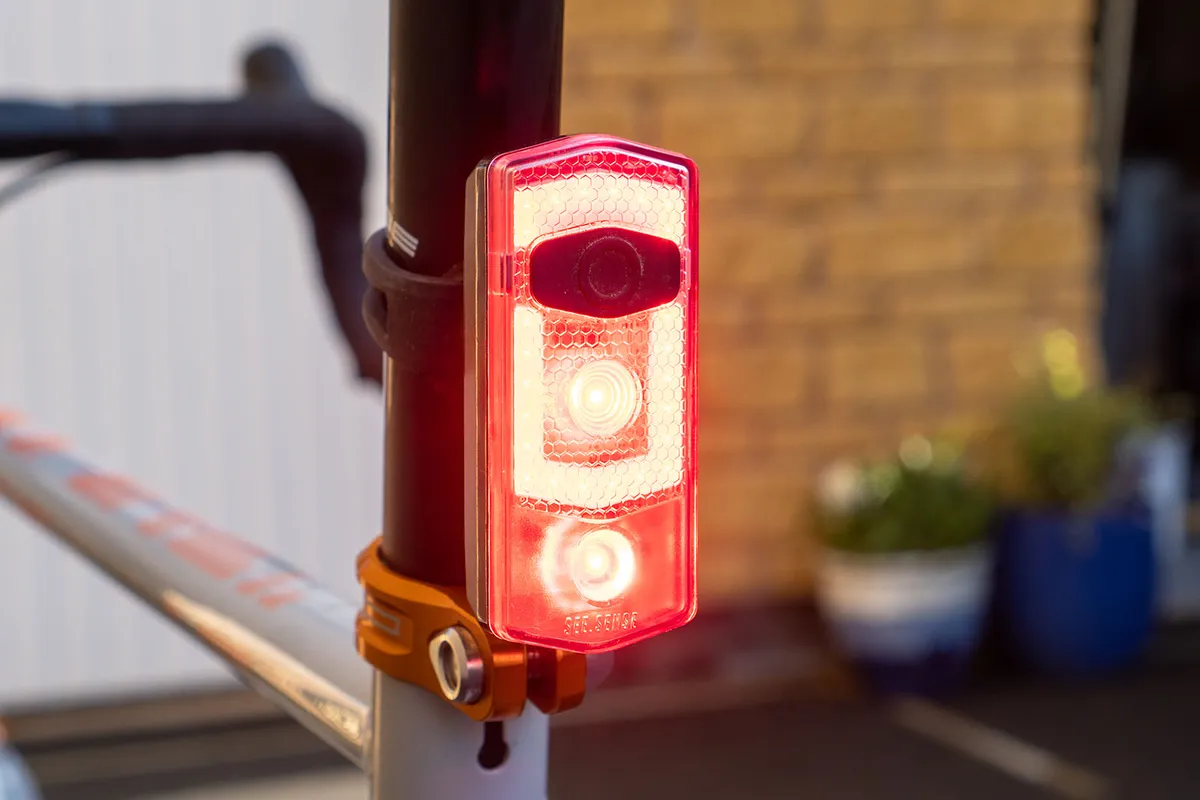
Yes, you can use only flashing lights front and rear, as long as they are both capable of emitting at least four candela (a unit of light intensity, roughly equal to 12 lumens, which is comfortably exceeded by most modern lights).
The light must also only flash between 60 and 240 times per minute (1 to 4Hz).
The jury is still out on whether it’s safer to run flashing or steady lights – a flashing light can distort depth perception and a steady light can be easily lost in a sea of other distracting lights.
The safest thing to do is run both, perhaps using a helmet-mounted light for the rear flashing LED.
Also, be aware that it’s illegal (not to mention highly dangerous and irresponsible) to show a red light at the front or a white light to the rear.
It is also illegal to fit triangular-shaped rear reflectors on anything other than a trailer. This could easily confuse drivers, especially in poor weather conditions.
Do my lights have to comply with UK standards to be legal?
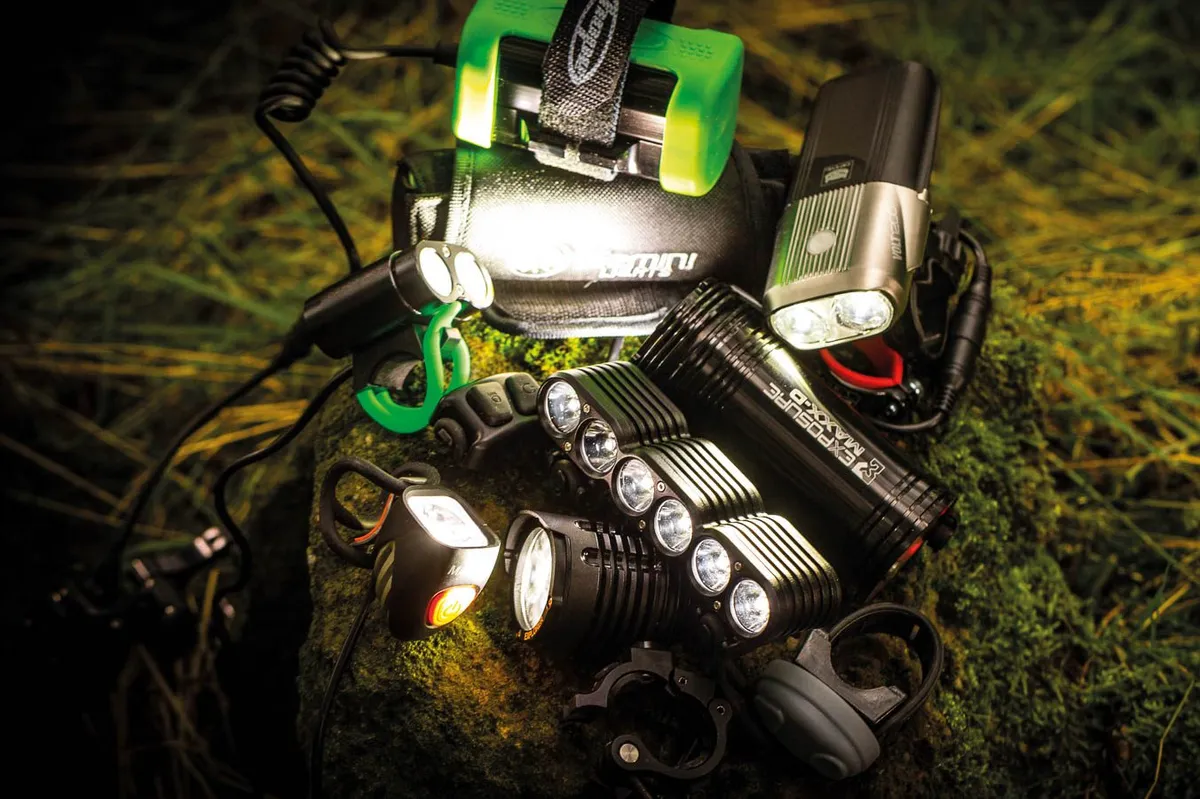
Yes, but also no.
If a light is capable of emitting a steady beam, legislation demands that lights comply to BS6102/3, but few – if any – lights actually comply with these standards.
However, as the amended RVLR allows for flashing lights, but BS6102/3 does not include flashing lights, approval is granted on the basis they have a power output above or equal to the aforementioned 4-candela limit and flash between 60 and 240 times per minute.
A light or reflector that does not conform to BS6102/3 standards, but conforms to a corresponding standard from another EC country that is marked accordingly would be considered to comply as long as that standard provides an equivalent level of safety.
If all of that sounds incredibly confusing that's because it is. As Cycling UK states: "Current UK legislation isn't up to speed with the technological advancements [in lighting technology] or the effects of global markets."
Can I use dynamos instead?

Dynamo-powered bike lights are legal even though many stop emitting light when the bike stops. It’s fine from a legal standpoint so long as you stop on the left.
Any good modern dynamo light will come with something called a standlight anyway, which provides a limited amount of extra stored power even when the dynamo isn’t running.
Do I have to use lights in daytime low-visibility conditions, such as fog?
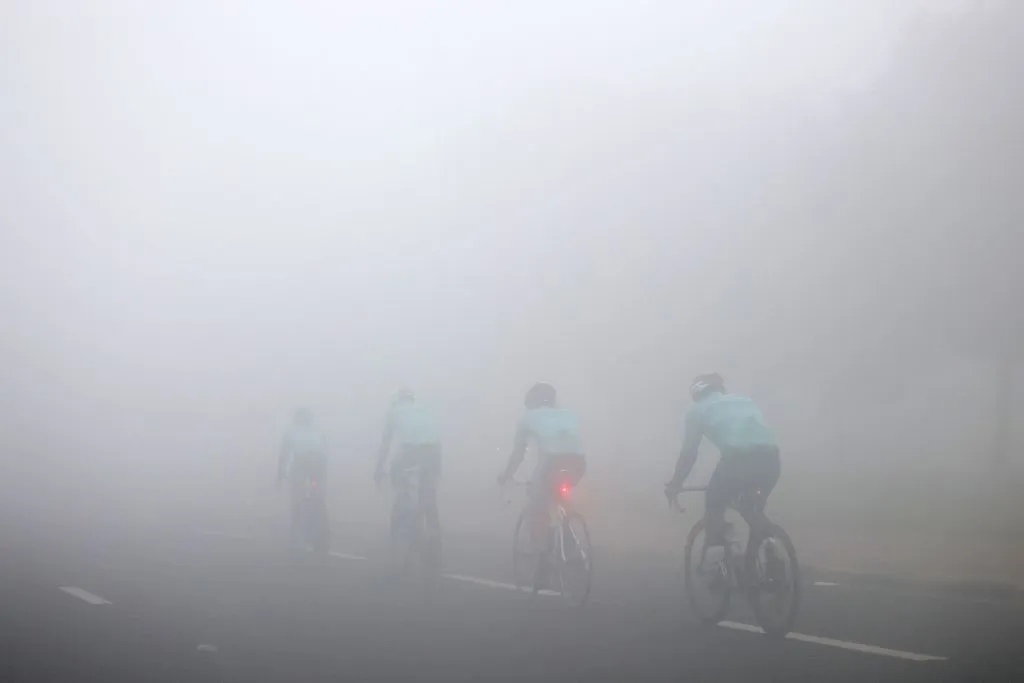
Unlike other vehicles, bicycles are not required to have lights fitted and switched on during seriously reduced visibility conditions – because lights are not required to be fitted during daylight hours.
However, it is a very sensible idea to have them fitted and switched on if you hit a bank of fog, so keep a close eye on that weather forecast.
Are older bikes exempt from these laws?
Not exactly. Cycles manufactured before October 1990 can have any kind of white front lamp that is visible from a reasonable distance, and pre-October 1985 cycles don’t need pedal reflectors.
Again, while it may not fit with your perfectly curated vintage aesthetic, it's still a good idea to fit lights to your retro bike.
Can I remove the wheel reflectors that my bike came with?
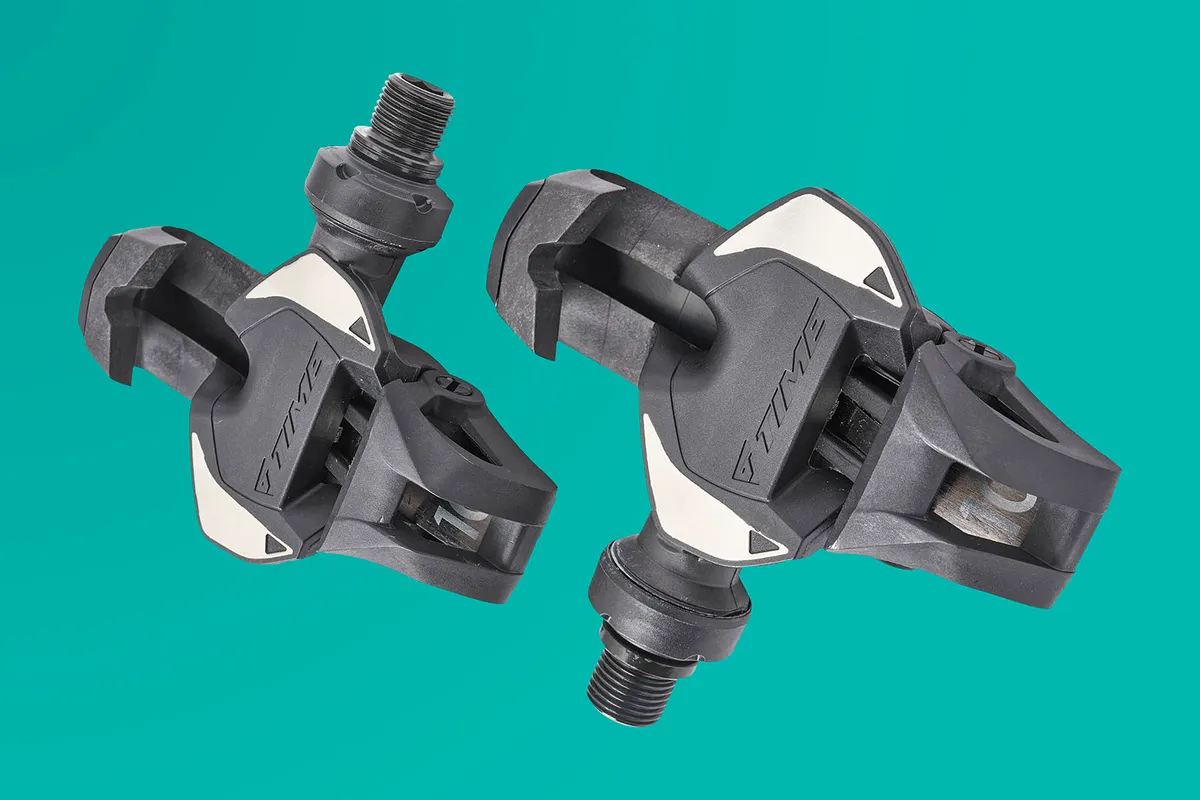
Yes, you may, although it will make your bike less visible at night.
The Pedal Cycles Safety Regulations (PCSR) apply to the sale of new bikes in the UK, and state that every new bicycle sold must come with several extra reflectors beyond those mentioned above. However, they're not required by the Road Vehicles Lighting Regulations to be fitted, so can be considered a 'bonus'.
These additional ones include reflectors on the sides of the wheels (clear white or coloured yellow). You can remove these if you really want to, but be aware that the bike shop you bought it from is probably unwilling to do it for you.
Remember that to stay on the right side of the law, your pedals must be fitted with reflectors.
This, obviously, causes a problem with most modern clipless pedals, which do not have provisions to fit reflectors.
Technically, this means using them at night is illegal, and if you're involved in a crash, could again count as contributory negligence.
If you want to stay on the right side of the law Shimano, for example, offers aftermarket bolt-on reflectors for its SPD-SL pedals. For two-bolt SPD pedal users, Shimano also offers an adaptor that converts one side of the pedal into a flat pedal that includes reflectors.
What about other countries?
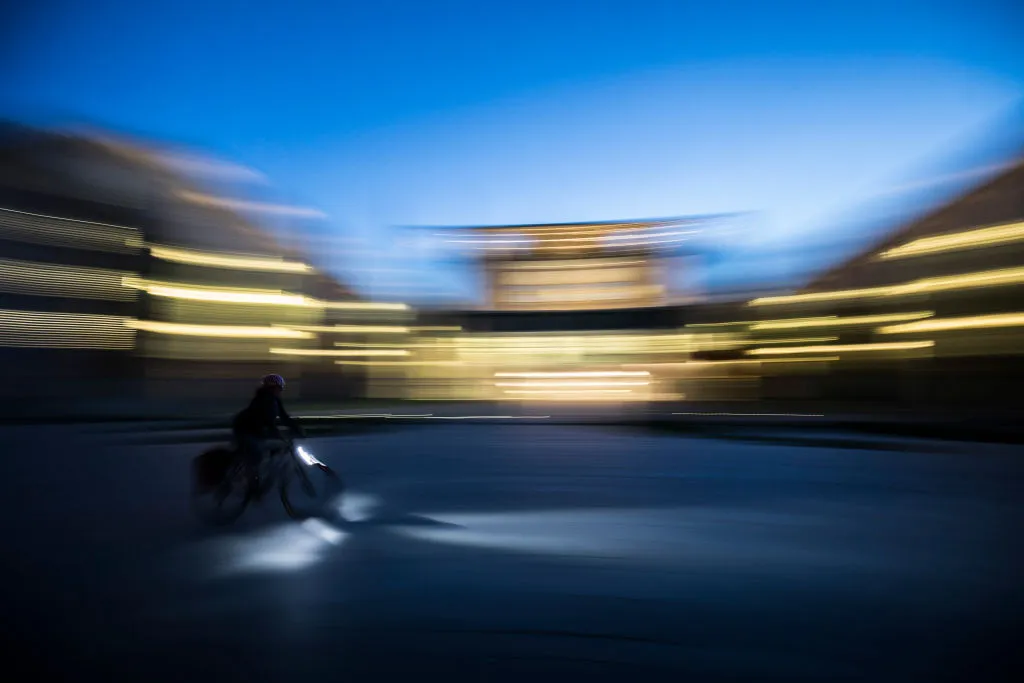
Most countries have their own laws relating to bike lights, with some more strict than others.
Germany's StVZO bike light regulations are some of the most prescriptive in the world and, because it's home to many large light manufacturers (not to mention a huge cycling population), you'll find many lights sold outside of Germany that comply.
US bike light laws
US bike light laws vary state by state. But the laws in Colorado are typical of most states.
Between sunset and sunrise or in low light conditions, you must have:
- A white front headlight visible from a minimum of 500 feet away
- A rear red reflector visible from a minimum of 600 feet away
Despite not being a legal requirement, it’s a good idea to attach a red rear light to your bike to maximise your visibility.
As well as a front light and rear reflector or light, some states require side reflectors too.
For example, Californian law insists on a white or yellow reflector on the pedal, foot or ankle visible from at least 200 feet.
If your road bike tyres aren’t reflective, you’ll also need white or yellow side reflectors on the front and red side reflectors at the back.
